Abstract
Eight hundred and ninety-six patients were followed up cytologically for up to 21 years following treatment for a CIN III lesion of the cervix. The recurrence rate (8.8%) was lower after hysterectomy than after treatment which preserved the cervix (23%). Long-term yearly follow-up is not required as all recurrences were detected by annual smears for a seven-year period after treatment in both groups. It is important to keep patients under cytological review following hysterectomy because of the appreciable recurrence rate and also evidence that intraepithelial lesions of the vaginal vault behave in an aggressive fashion.
Full text
PDF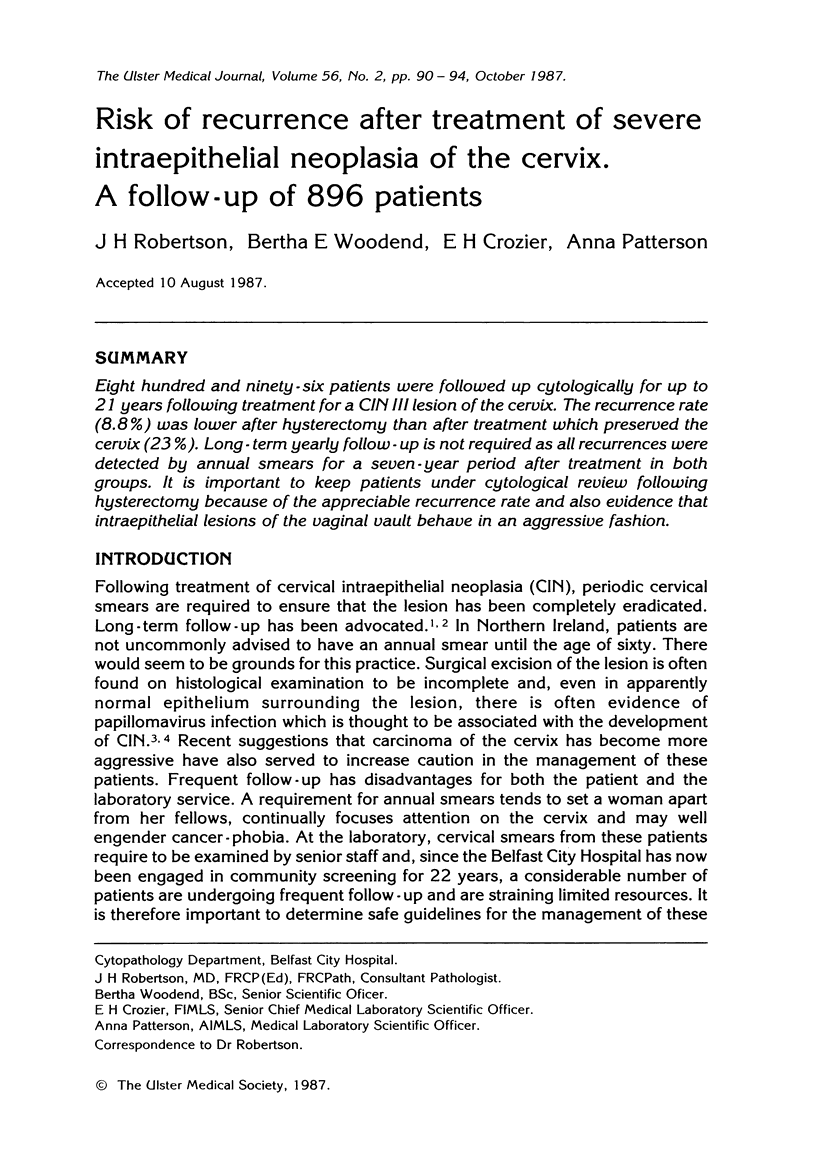
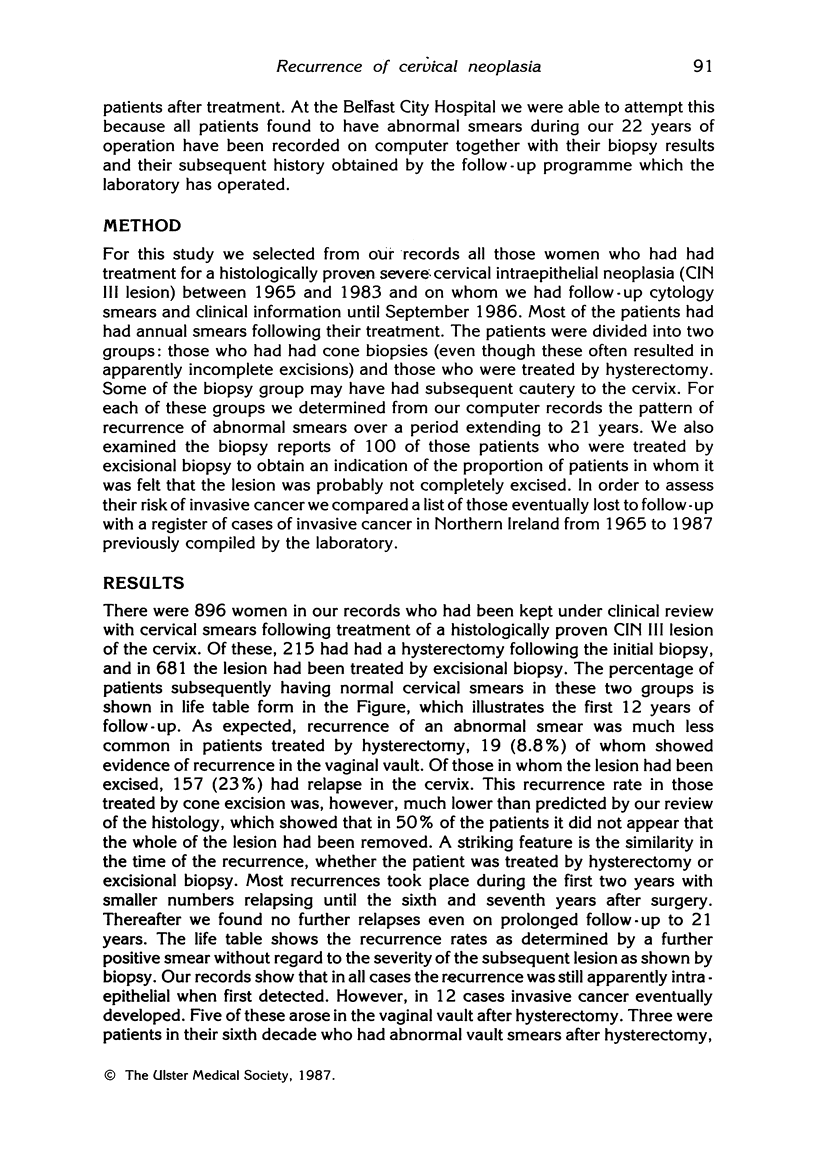
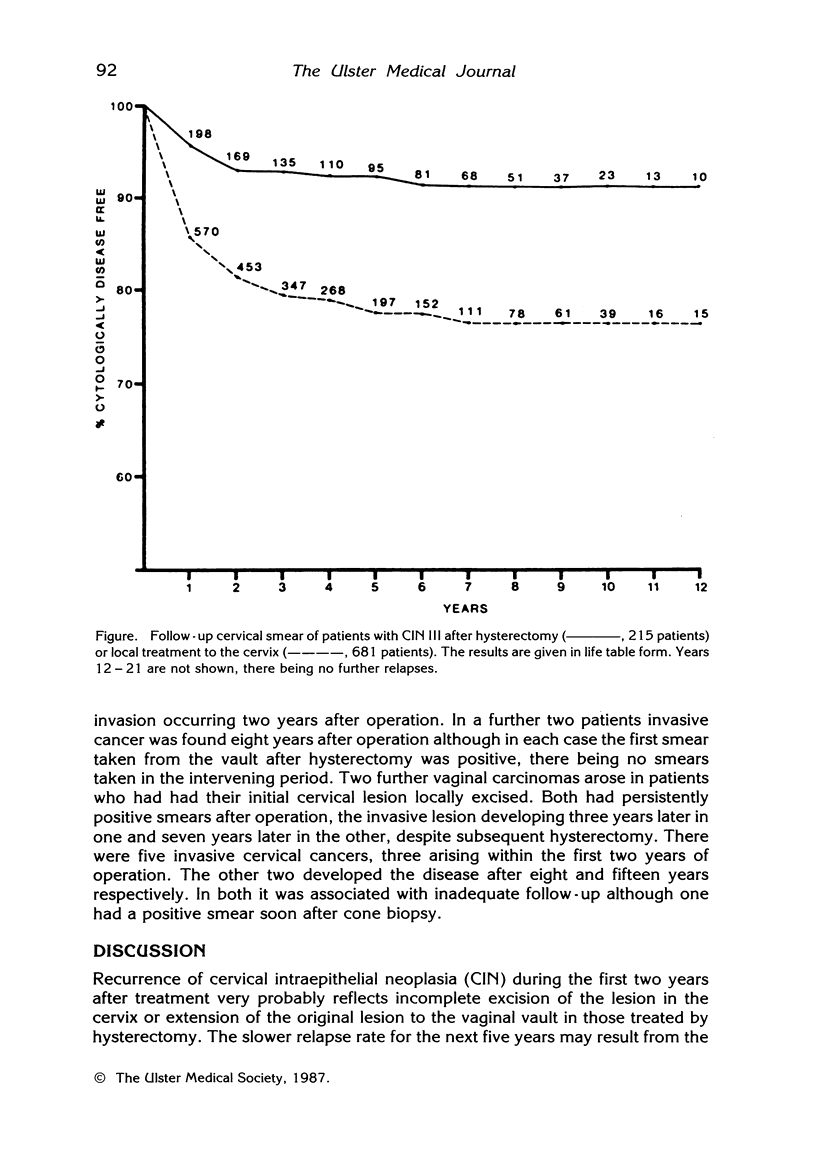
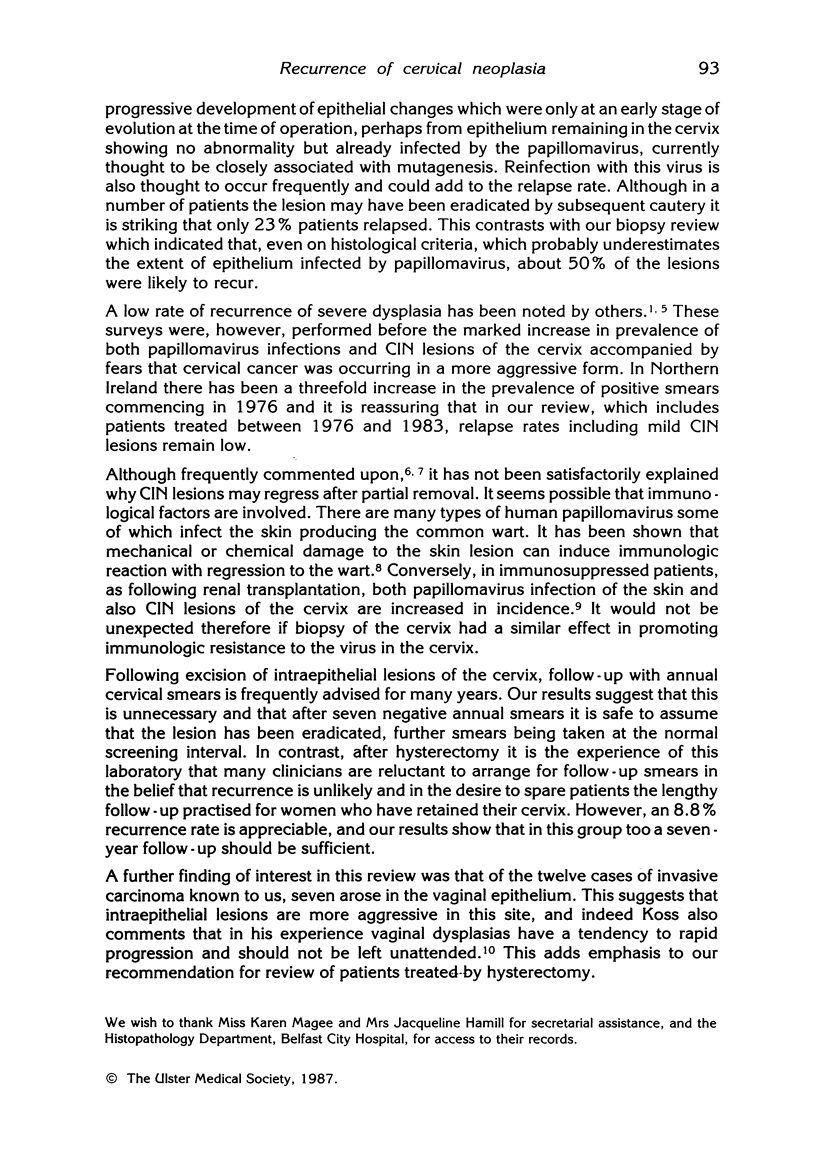
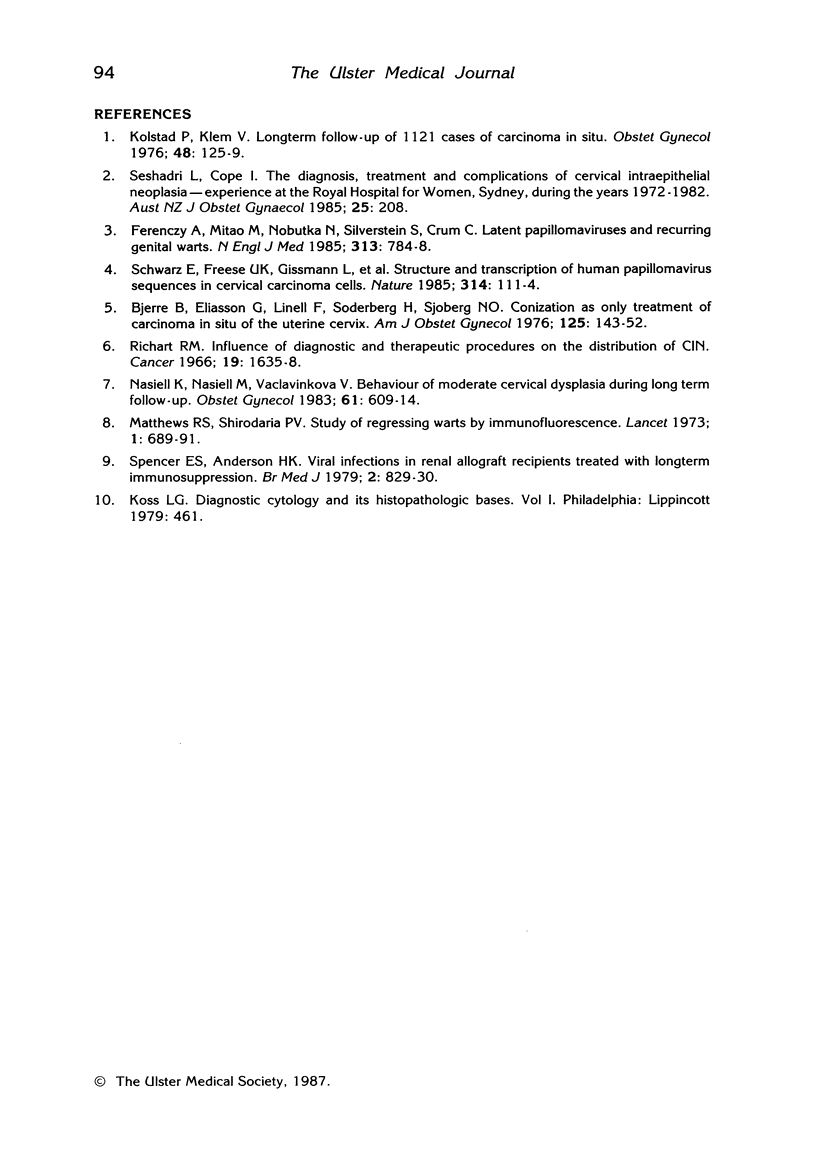
Selected References
These references are in PubMed. This may not be the complete list of references from this article.
- Bjerre B., Eliasson G., Linell F., Söderberg H., Sjöberg N. O. Conization as only treatment of carcinoma in situ of the uterine cervix. Am J Obstet Gynecol. 1976 May 15;125(2):143–152. doi: 10.1016/0002-9378(76)90584-6. [DOI] [PubMed] [Google Scholar]
- Ferenczy A., Mitao M., Nagai N., Silverstein S. J., Crum C. P. Latent papillomavirus and recurring genital warts. N Engl J Med. 1985 Sep 26;313(13):784–788. doi: 10.1056/NEJM198509263131304. [DOI] [PubMed] [Google Scholar]
- Kolstad P., Klem V. Long-term followup of 1121 cases of carcinoma in situ. Obstet Gynecol. 1976 Aug;48(2):125–129. [PubMed] [Google Scholar]
- Matthews R. S., Shirodaria P. V. Study of regressing warts by immunofluorescence. Lancet. 1973 Mar 31;1(7805):689–691. doi: 10.1016/s0140-6736(73)91478-5. [DOI] [PubMed] [Google Scholar]
- Nasiell K., Nasiell M., Vaćlavinková V. Behavior of moderate cervical dysplasia during long-term follow-up. Obstet Gynecol. 1983 May;61(5):609–614. [PubMed] [Google Scholar]
- Richart R. M. Influence of diagnostic and therapeutic procedures on the distribution of cervical intraepithelial neoplasia. Cancer. 1966 Nov;19(11):1635–1638. doi: 10.1002/1097-0142(196611)19:11<1635::aid-cncr2820191130>3.0.co;2-1. [DOI] [PubMed] [Google Scholar]
- Schwarz E., Freese U. K., Gissmann L., Mayer W., Roggenbuck B., Stremlau A., zur Hausen H. Structure and transcription of human papillomavirus sequences in cervical carcinoma cells. Nature. 1985 Mar 7;314(6006):111–114. doi: 10.1038/314111a0. [DOI] [PubMed] [Google Scholar]
- Seshadri L., Cope I. The diagnosis, treatment and complications of cervical intraepithelial neoplasia--experience at the Royal Hospital for Women, Sydney, during the years 1972-1982. Aust N Z J Obstet Gynaecol. 1985 Aug;25(3):208–211. doi: 10.1111/j.1479-828x.1985.tb00645.x. [DOI] [PubMed] [Google Scholar]
- Spencer E. S., Andersen H. K. Viral infections in renal allograft recipients treated with long-term immunosuppression. Br Med J. 1979 Oct 6;2(6194):829–830. doi: 10.1136/bmj.2.6194.829. [DOI] [PMC free article] [PubMed] [Google Scholar]


